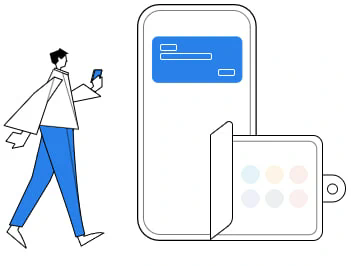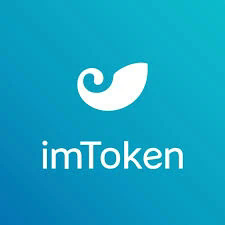# Understanding Imtoke: A Comprehensive Overview
## What is Imtoke?
Imtoke is an emerging concept that has gained traction in various fields, including technology, art, and social science. While there isn’t a single definition that encapsulates the entirety of Imtoke, it generally refers to a blend of innovative ideas and cultural expressions. Imtoke represents the fusion of tradition and modernity, a reflection of how contemporary society is evolving while holding onto its roots. This concept can manifest in a multitude of forms, from digital art to social movements, exemplifying the ongoing dialogue between past and present.
## The Origins of Imtoke
The roots of Imtoke can be traced back to various cultural phenomena. It draws influences from historical movements that emphasized creativity and innovation, as well as the integration of technology in everyday life. For example, the advent of the internet has enabled artists and thinkers to share their work globally, leading to the creation of new artistic styles and cultural practices. Imtoke quite literally means a multiplication of ideas—where one person’s creativity sparks inspiration in another, leading to an ever-expanding web of creativity. This aspect of Imtoke is crucial to understanding its relevance in today’s world.

## The Role of Technology in Imtoke
In the digital age, technology plays a central role in the evolution of Imtoke. Social media platforms, for instance, allow for the rapid dissemination of artistic works and cultural ideas. Artists can share their creations instantly, reaching a global audience and facilitating collaboration beyond geographical boundaries. Imtoke encompasses this interaction, illustrating how technology can bridge gaps and foster a vibrant ecosystem of creativity. Furthermore, technological advancements—such as artificial intelligence and augmented reality—are transforming how art is created and experienced, pushing the limits of what we define as creative expression.
## Imtoke in Art and Culture
Art is undoubtedly one of the most significant domains where Imtoke flourishes. Contemporary artists often draw upon traditional techniques while incorporating modern themes and technologies. This blending of styles and inspirations is a hallmark of Imtoke. For example, street art, which often reflects social issues, combines traditional painting techniques with modern graffiti styles. Similarly, digital artists use conventional artistic principles merged with innovative software to produce groundbreaking visual experiences.
Cultural festivals that showcase a blend of traditional and modern elements can also be considered a manifestation of Imtoke. These events bring together diverse groups of people, allowing them to experience and celebrate cultural identities while embracing modern influences. Such gatherings enhance social cohesion and promote understanding among different communities, demonstrating how Imtoke can be a powerful tool for fostering cultural dialogue.
## Imtoke and Social Change
Imtoke is not just about art and technology; it also serves as a catalyst for social change. Many social movements today leverage the principles of Imtoke to advocate for various causes, from environmental sustainability to equality. These movements utilize social media to organize, spread awareness, and galvanize support, embodying the very essence of Imtoke by intertwining cultural expressions with activism.
Additionally, Imtoke enhances the narrative of social issues by incorporating various forms of media. Documentaries, podcasts, and multimedia presentations help to educate the public and push for reforms by presenting complex topics in accessible formats. This multidimensional approach is crucial for raising awareness and creating meaningful connections among individuals from different backgrounds.
## The Impact of Imtoke on Education

Education is another area significantly influenced by the concept of Imtoke. Traditional educational models are evolving to include more creative and interdisciplinary approaches, emphasizing the importance of critical thinking and creativity. Schools and universities that embrace Imtoke incorporate a blend of traditional subjects with arts, technology, and social sciences, equipping students with the skills necessary to navigate a rapidly changing world.
Moreover, the increasing popularity of online courses has made education more accessible, allowing learners from various backgrounds to engage with diverse ideas and perspectives. This democratization of knowledge exemplifies the principles of Imtoke, fostering a more inclusive environment where creativity and innovation can thrive.
## Imtoke in Business and Innovation
The corporate world is also experiencing the influence of Imtoke. Companies are increasingly recognizing the value of fostering a culture of creativity and collaboration among their employees. This shift can be seen in the rise of co-working spaces, innovation hubs, and cross-disciplinary teams that encourage diverse perspectives. The ability to integrate different experiences and ideas is essential for driving innovation in a competitive market.
Startups in particular embody the spirit of Imtoke, as they often challenge traditional business models and embrace unconventional approaches. By combining technology, art, and social awareness, these companies are not only seeking profit but also aiming to create positive impacts on society. This holistic approach to business reflects a broader understanding of success, aligning with the ideals inherent in Imtoke.
## Challenges and Critiques of Imtoke
Despite the many positive aspects of Imtoke, it’s important to recognize the challenges and critiques surrounding it. The rapid pace of technological advancement can sometimes overshadow traditional practices, leading to concerns about cultural homogenization. Some argue that the commodification of culture, spurred by globalization, risks diluting the unique identities that make up our societies.
Furthermore, the rise of social media has raised questions about authenticity and the nature of creativity. With the abundance of content available online, distinguishing original works from derivative pieces can be challenging. This issue highlights the need for a more nuanced understanding of creativity within the framework of Imtoke, encouraging a balance between innovation and respect for cultural heritage.
## The Future of Imtoke
Looking ahead, the future of Imtoke seems promising yet complex. As society continues to navigate the interplay between tradition and modernity, the demand for creative solutions to pressing issues will only grow. Imtoke can inspire new ways of thinking and problem-solving, guiding us toward a more inclusive and innovative future.
Policymakers, educators, artists, and entrepreneurs must collaborate to ensure that the principles of Imtoke are integrated into various sectors. By valuing creativity and cultural diversity, we can build resilient communities that are better equipped to face the challenges of tomorrow.
## Conclusion
In summary, Imtoke is a multifaceted concept that encompasses art, technology, social change, education, and business. Its relevance in today’s society illustrates the importance of innovation and creativity in shaping our world. By understanding and embracing the principles of Imtoke, we can foster a more inclusive, interconnected, and dynamic future that honors both our traditions and our aspirations. As we continue to explore the depths of this concept, it is essential to remain mindful of the challenges it presents, ensuring that we value and protect the diverse cultural identities that enrich our collective human experience.
As we move forward, let us recognize the power of Imtoke to inspire change, promote understanding, and celebrate the rich tapestry of our global society. Just as Imtoke encourages the fusion of ideas and practices, we too can foster a culture of collaboration and creativity that defines the next chapter of our shared journey.
